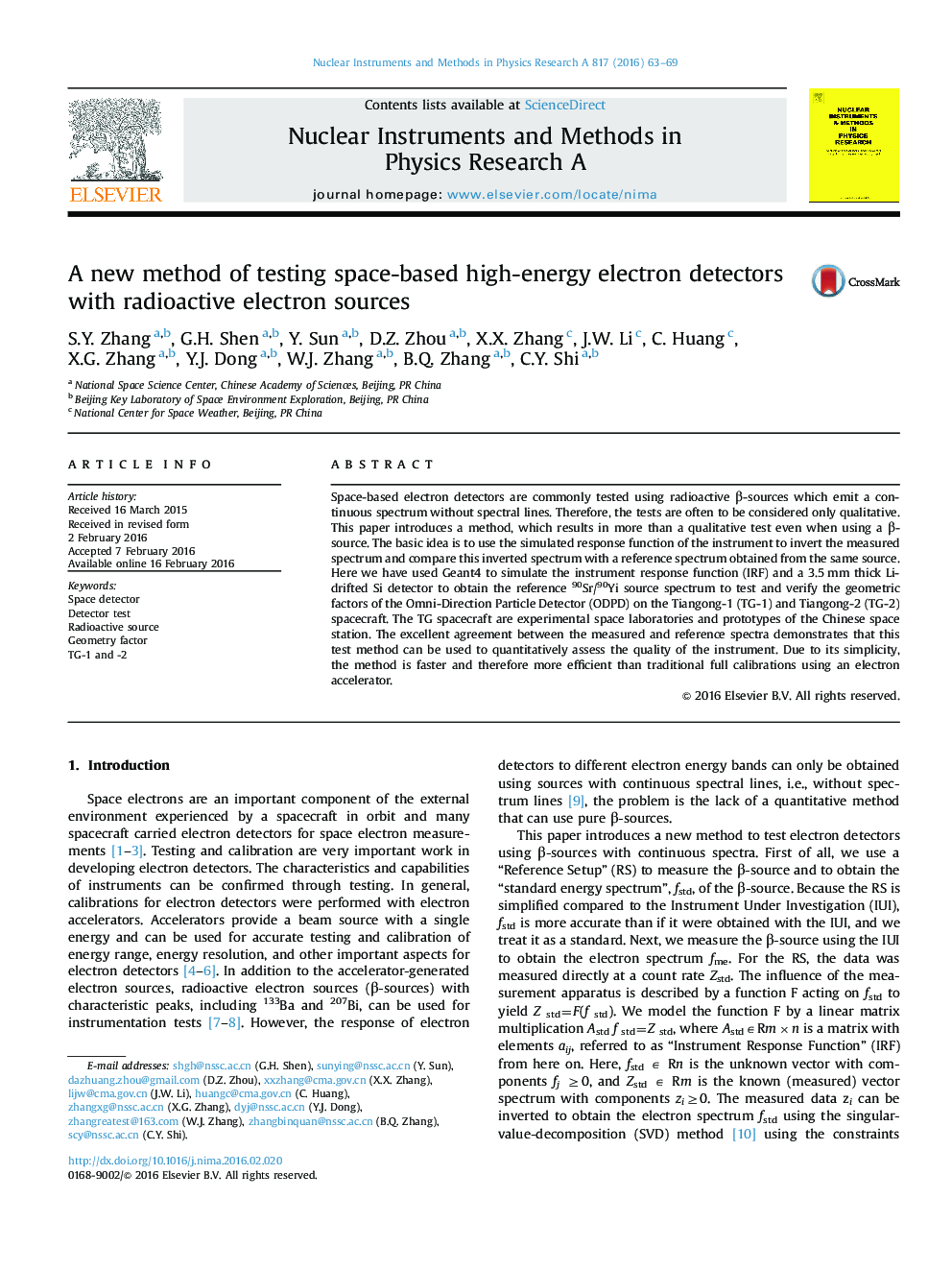| Article ID | Journal | Published Year | Pages | File Type |
|---|---|---|---|---|
| 8170757 | Nuclear Instruments and Methods in Physics Research Section A: Accelerators, Spectrometers, Detectors and Associated Equipment | 2016 | 7 Pages |
Abstract
Space-based electron detectors are commonly tested using radioactive β-sources which emit a continuous spectrum without spectral lines. Therefore, the tests are often to be considered only qualitative. This paper introduces a method, which results in more than a qualitative test even when using a β-source. The basic idea is to use the simulated response function of the instrument to invert the measured spectrum and compare this inverted spectrum with a reference spectrum obtained from the same source. Here we have used Geant4 to simulate the instrument response function (IRF) and a 3.5 mm thick Li-drifted Si detector to obtain the reference 90Sr/90Yi source spectrum to test and verify the geometric factors of the Omni-Direction Particle Detector (ODPD) on the Tiangong-1 (TG-1) and Tiangong-2 (TG-2) spacecraft. The TG spacecraft are experimental space laboratories and prototypes of the Chinese space station. The excellent agreement between the measured and reference spectra demonstrates that this test method can be used to quantitatively assess the quality of the instrument. Due to its simplicity, the method is faster and therefore more efficient than traditional full calibrations using an electron accelerator.
Keywords
Related Topics
Physical Sciences and Engineering
Physics and Astronomy
Instrumentation
Authors
S.Y. Zhang, G.H. Shen, Y. Sun, D.Z. Zhou, X.X. Zhang, J.W. Li, C. Huang, X.G. Zhang, Y.J. Dong, W.J. Zhang, B.Q. Zhang, C.Y. Shi,
